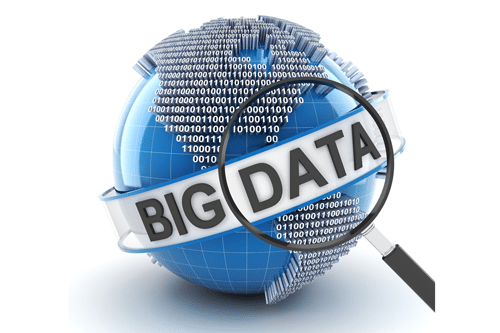The oil and gas industry is drowning in data. Oil & gas operators routinely collect various kinds of data: flow rates, temperature, pressure, drill speed, failure rates,

subsurface characteristics and more. But how is the industry putting this data to work? New analytical techniques drawn from the fields of statistics and computer science can help oil & gas companies make sense of the data deluge to make more efficient and effective development and production decisions.
What’s the Big Deal with “Big Data”?
Data analytics is already transforming fields from consumer marketing to medicine to cybersecurity. It is now poised to be a game changer for the oil & gas industry as well. But what do we really mean by “big data”?
The industry has always collected and used data to make decisions for exploration, development and production. What is different now is the volume, velocity and variety of the data that we collect. Instead of collecting tens or hundreds of data points for an oil well over the course of a day, we now routinely collect hundreds of thousands of data points.
New sensor technologies, faster computer processors and advances in scientific understanding of subsurface geology and fluid dynamics (among other fields) have vastly expanded the types of data we are able to collect, the rate at which we are able to collect it, the precision and accuracy of the data, and the conclusions that we are able to draw from it.
Pulling actionable insights out of all of that data requires sophisticated data analytics. Analytics (also referred to as data mining, statistical learning or knowledge discovery) allows us to analyze large volumes of data from disparate sources in order to extract meaningful information that can be used to increase operational efficiencies. Analytics can identify the patterns and relationships hidden in large, complex datasets so operators can understand what the data is telling them and predict how different operational decisions may impact outcomes.
Applications for Data Analytics in the Oil & Gas Industry
Data analytics can be used across all phases of oil & gas exploration, production and operations. Some of the most promising applications include:
- Exploration data mining: Analytics can be used to find hidden patterns in large geologic datasets in order to build better correlations, create synthetic logs at unsampled locations, identify sweet spots, etc.
- Reservoir management: Analyzing field data can help to identify factors that impact reservoir performance and predict the production potential of oil and gas wells based on their characteristics.
- Proxy modeling: Reservoir modeling has long been used to make performance predictions and development decisions. However, building a detailed model can take months or years, and running a single simulation may take days or weeks. Data analytics can be used to build “proxy models,” i.e., fast system emulators that can run hundreds of simulations per day to support computation-intensive tasks, such as optimization and uncertainty quantification.
- Performance forecasting: Analytics allows for rapid prediction of production in large oilfields. Statistical models can also be used to identify optimal scenarios for Enhanced Oil Recovery (EOR) efforts.
- Predictive maintenance: By combining real-time data with past performance data, operators can use data analytics to predict potential failures before they occur and make appropriate operating and maintenance decisions to avoid unscheduled delays. For example, models can be built to estimate wear on PDC bits and other types of equipment or predict wellbore integrity.
Getting Started: Putting Data to Work
In order to put big data analytics into practice, oil & gas companies need to have appropriate infrastructure and technology tools in place. It’s not enough to just collect lots of data. You need to have systems that are able to collect, compile and organize the data in centralized repository for analysis. You also need sophisticated analytical tools that are able to extract meaning from all the data points.
Building a big data program requires several layers of hardware and software.
- Infrastructure: The foundation of a data analytics program includes the technology needed to collect and store data, including servers, networks and clustering software. All of the data needs to be brought together in one place for storage and analysis.
- Data organization and management: In order to be able to utilize data from a variety of sources—which may include both structured and unstructured data—the data must first be extracted, cleansed, tagged and integrated.
- Analytics and discovery: Once data has been tagged and organized, it can be analyzed. This layer includes software programs for data discovery as well as sophisticated programs for deep analysis and automated, rules-based transactional decision making.
- Decision support and automation interface: This is the layer that supports the humans in the equation with tools to enable risk management, scenario evaluation, collaboration and decision capture and retention.
The Future of Data Analytics in Oil & Gas
The age of “big data” in oil & gas is just dawning. Over the next few years, the industry can expect to see many more applications of statistical and machine learning methods, including tools for digital oil field management, real-time analytics and predictive maintenance. Using data-driven insights will be increasingly important as the industry continues to search for ways to squeeze more production out of existing wells and improve operational efficiencies.
Putting the infrastructure in place to support data mining and analytics may look daunting. However, technology and software advances have increasingly made advanced data analytics accessible for even small and mid-range producers. These statistical methods are a practical alternative for day-to-day decision making when advanced computer modeling is not practical or feasible. Now is the perfect time for companies of all sizes to explore the power and potential applications of big data in the oil field.
Dr. Srikanta Mishra is a Senior Research Leader at Battelle. He joined independent research-and-development organization in 2010 after a distinguished career in environmental consulting, including an appointment as Adjunct Professor of Petroleum Engineering at University of Texas. He is nationally and internationally recognized for his expertise in subsurface resource management, and regularly presents lectures, workshops and short courses on hydraulic fracturing related environmental impacts. He holds a PhD in Petroleum Engineering from Stanford University.






